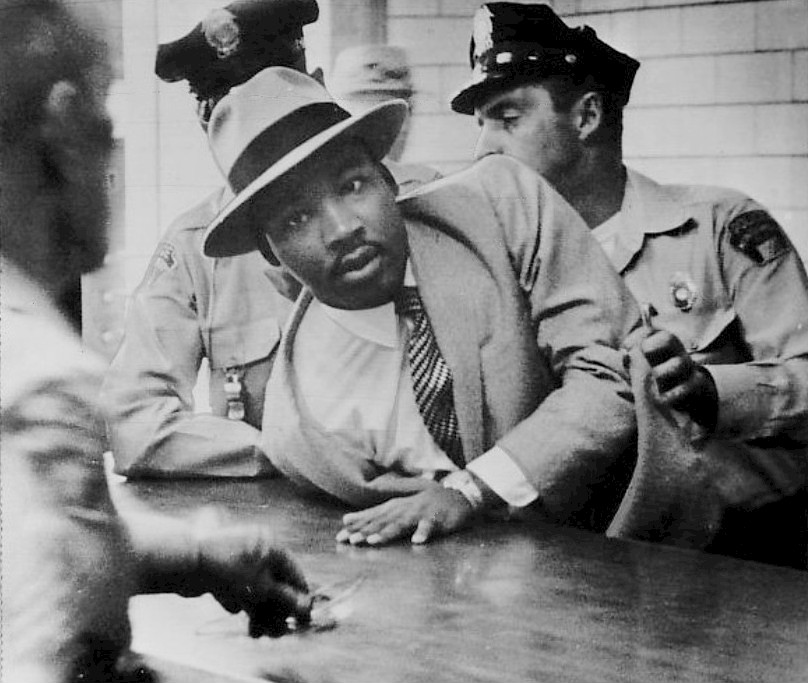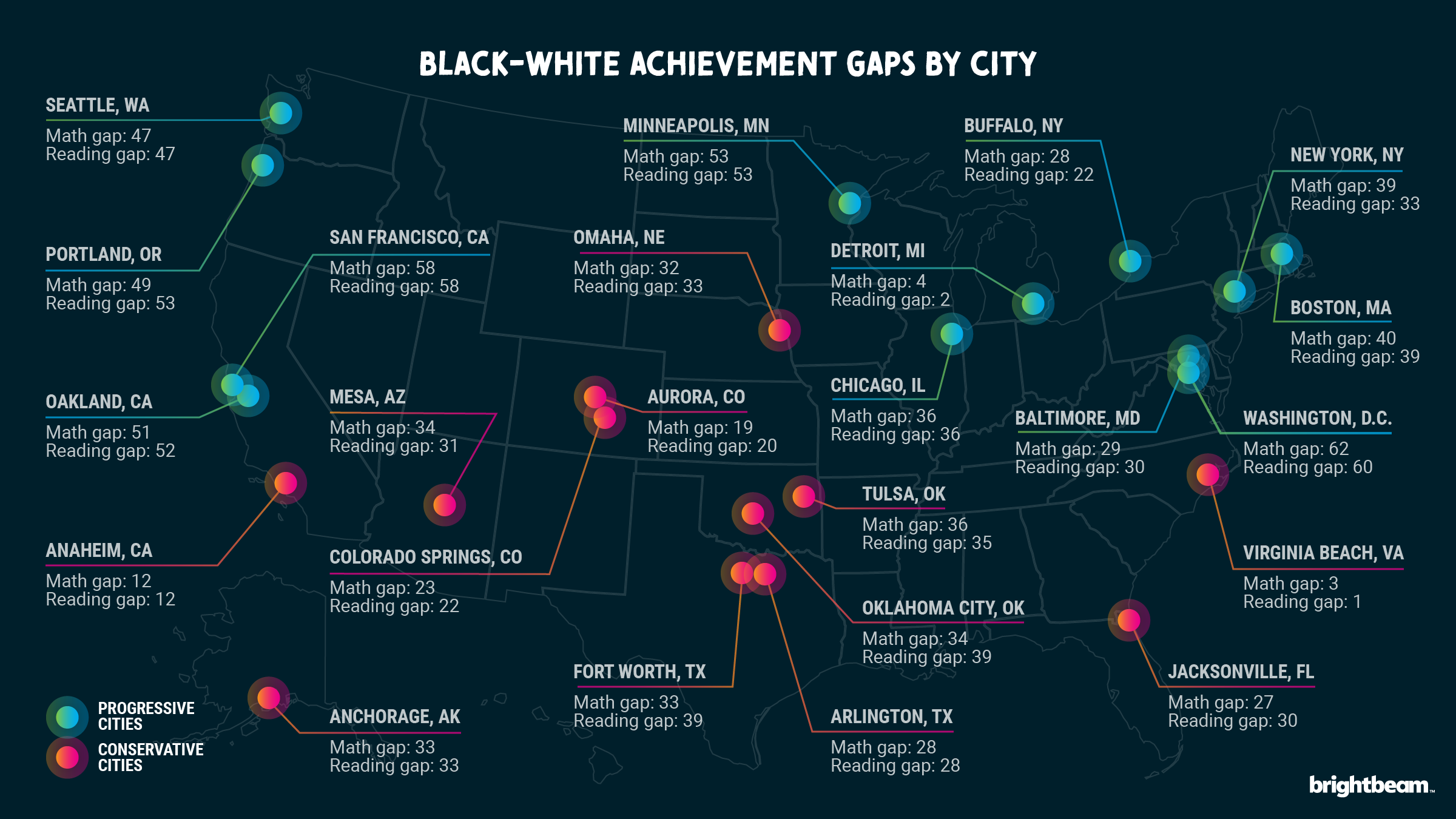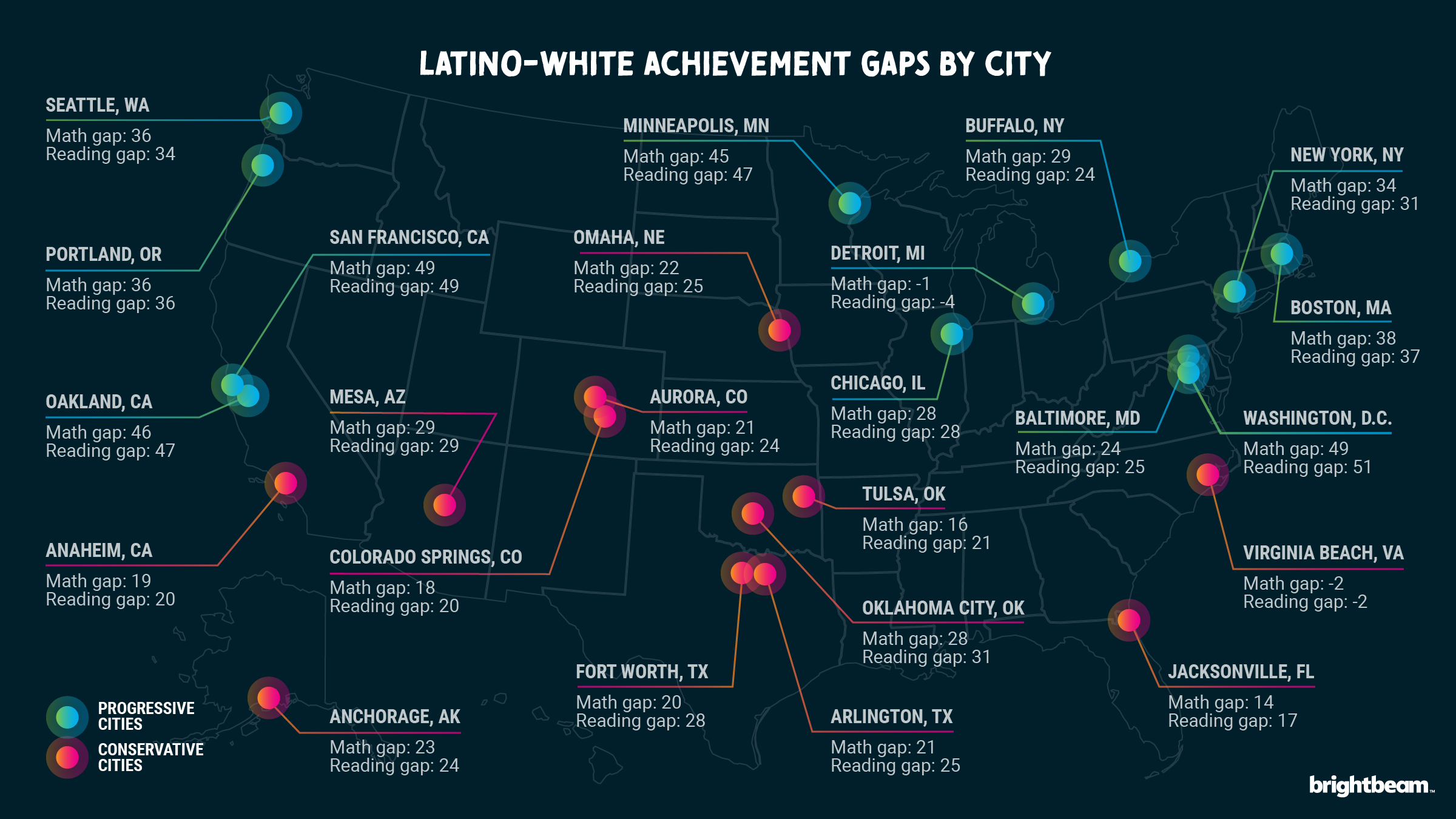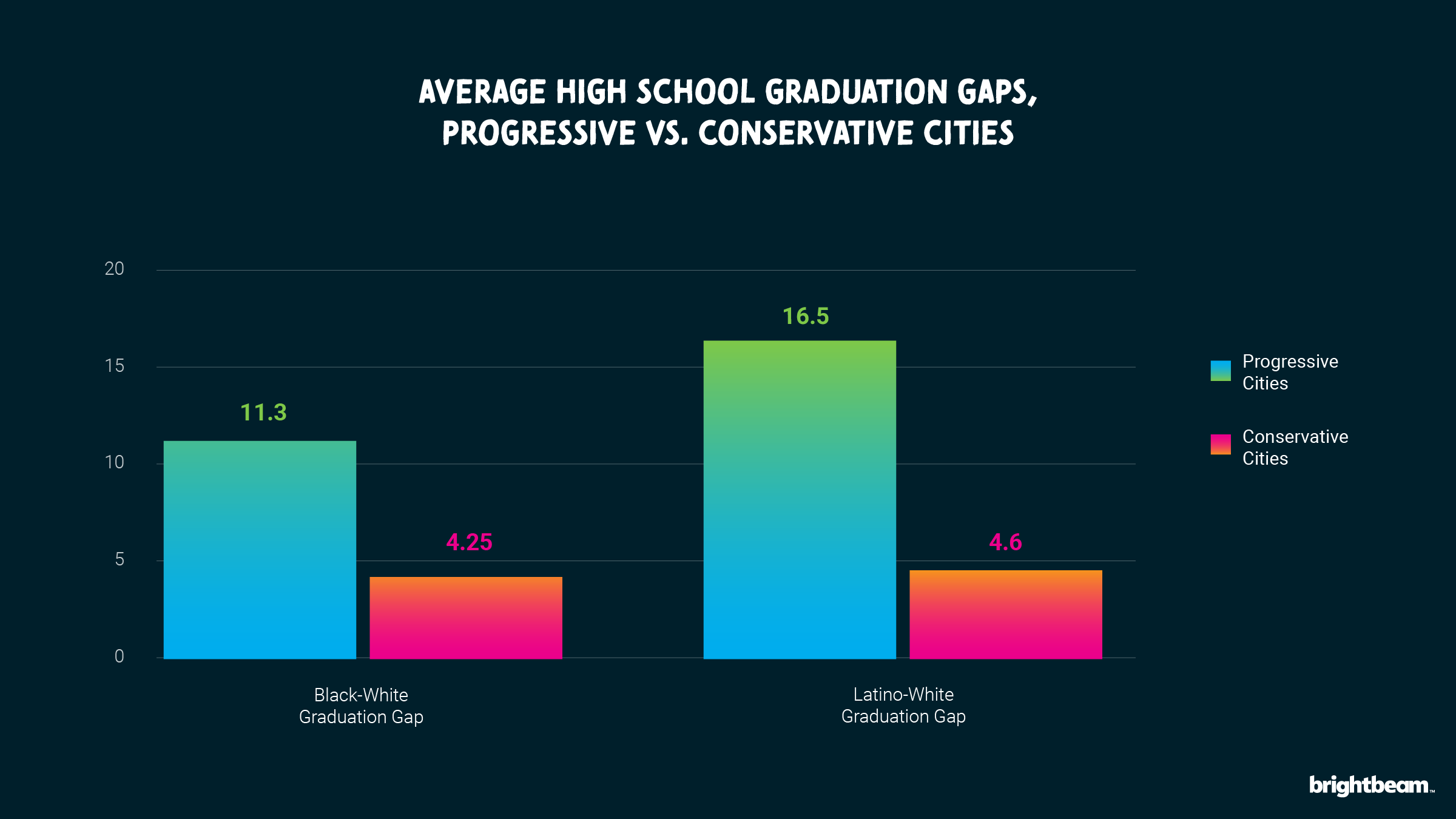Our schools, unlike other systems, do not work equally well for everyone.
In many of America’s most progressive cities, hidden in the shadows of all that prosperity are too many children who will never enjoy all that their city has to offer.
The achievement gap in progressive and conservative cities is real. It’s time for meaningful plans that inspire real change from our elected officials.

The Secret Shame:
How America’s Most Progressive Cities Betray Their Commitment to Educational Opportunity for All
Leaders of progressive cities often frame their policy proposals in terms of what’s best for those with the least opportunity and the greatest obstacles. And yet, students in America’s most progressive cities face greater racial inequity in achievement and graduation rates than students living in the nation’s most conservative cities.
As you read, keep in mind that this is a first look at the problem plaguing progressive cities. Our work is just getting started.

Progressive cities are failing to prepare students for their future.
Our most conservative cities are closing opportunity gaps.
This report is an attempt to highlight a problem we see as fixable.
All of us, whether we identify as progressive or conservative, should not be satisfied with impassioned rhetoric and token initiatives alone. We need positive action.
It’s time to stand up and make sure our leaders work with communities to create a path for success for all students.
Pledge to Demand a Plan
Commit yourself to demanding educational justice from the leaders in your city. We will share actions with you every week that you can take to make meaningful change for students and families in your community.
For leaders with stewardship over children:
1. Call the city together to understand the issue:
Convene school and city leaders, teachers and parents to identify where the greatest challenges are, what’s been tried in the past, what’s never been tried, and why the educational realities of black and brown students are so far removed from the cherished ideals of your city.
2. Make better plans; set short timelines:
If you’re trying the same tired initiatives that haven’t worked before, you’re not serious about helping black and brown kids. Take a political risk on behalf of the families who need you most. Reach out beyond your typical networks. Bring in well-researched ideas and innovators to make informed bets on what can help students in your city. Work with your communities to develop and commit to a city-wide strategic plan that outlines specific, measurable goals. And set a timeline that will expire before you leave your position. Accountability matters.
3. Share better information:
Information matters to parents and anyone else who cares about results. Most parents in most cities either get misleading information about their child’s progress or information that’s so complex or out of context that it’s rendered useless. Develop a way of making school information more accessible and easy to understand for the communities you serve.
For parents, advocates and others:
1. Spread the word:
Create a sense of urgency in your community. Start conversations with your friends and family on the need to hold leaders accountable and close achievement gaps. Raise awareness of how the failures of the current educational system in your city fails to live up to your own values for meeting the needs of every child.
2. Demand a plan:
Ensure your city’s leaders gather community input to create a plan that can be measured against results. Sign a petition for your city leaders to create a plan to help all children succeed in school, or get involved in any number of our other action opportunities on this site.
3. Make your voice heard in the halls of power:
Reach out on your own to political leaders, from the mayor to the school board. Show up at public meetings about education. Tell them how you feel about the achievement gaps in your city and offer to help. In the end, it’s up to each of us to tell our leaders this matters and to hold them accountable to close these gaps.
Supplemental Data Analysis
Have questions about how we analyzed this data? We’ve worked with researchers to create a supplemental analysis looking at different measures of income inequality.
Listen to our podcast
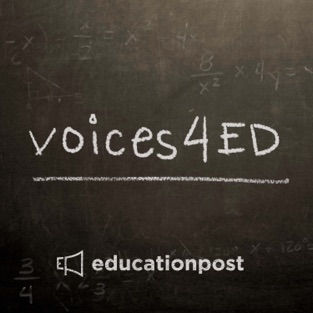 Voices4Ed
Voices4Ed
Progressive Cities
Taking Action in Progressive Cities
Select your city to see…
San Francisco
In SAN FRANCISCO, 70% of white students are proficient in math compared to 12% of black students, a 58-point gap. MOREWashington, D.C.
In WASHINGTON, D.C., 80% of white students are proficient in math as opposed to 18% of black students, a 62-point gap. MOREDetroit
Only 7% of DETROIT public school students are proficient in math and only 14% are proficient in reading. MOREMinneapolis
In MINNEAPOLIS, the Latino-white high school graduation rate gap is 30 percentage points. MOREChicago
Both the reading and math proficiency gaps between black and white students in CHICAGO is 36 points. MOREBaltimore
The reading proficiency gap between Latino and white students in BALTIMORE is 25 points. MORENew York City
The reading proficiency gap between black and white students in NEW YORK is 33 points. MORE
Blog Updates
“This report highlights a fixable problem and calls for meaningful plans from political leaders that are co-created with the communities they serve and monitored year-over-year for real progress.”
Chris Stewart
brightbeam Chief Executive Officer




